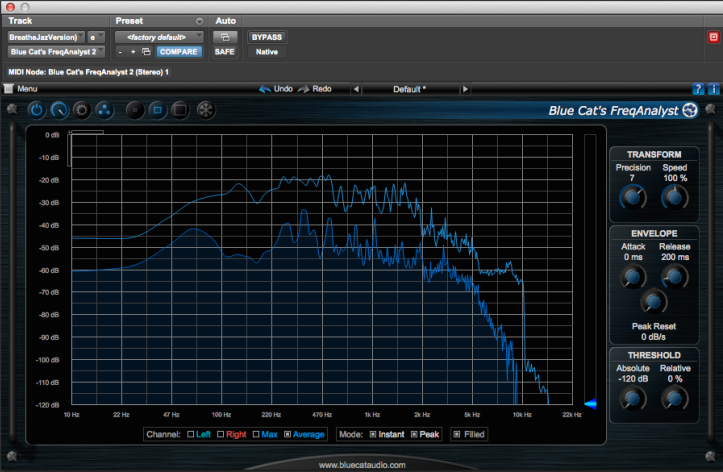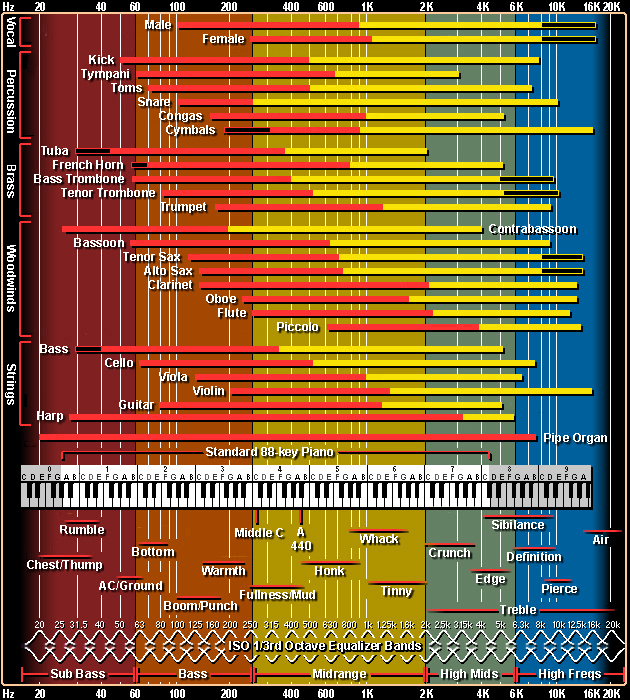Reference track details
Track: Breathe
Artist: Telepopmusik
Released: 2001
Album: Genetic World
“Breathe” is the title of the debut single by the French dance group Telepopmusik. It features guest vocals by singer Angela McCluskey and appears on the group’s 2001 album Genetic World.
Released as a single in 2002, “Breathe” reached #42 on the UK Singles Chart in March of that year. The single was released late in the year in the US, and it reached its peak chart positions on the Billboard Hot Dance Club chart (#9) and the Hot 100 chart (#78) in February 2003.
Listen to the track by clicking on play button below.
Rationale
This case study has been designed to assist myself and my project partner Shay Mitchell, in the process of ‘reverse engineering’ this chosen reference track for project two: Short film soundtrack. Reference tracks are chosen on the basis that they should meet a particular outcome for the project and the case study should assist me in creating a recording that not only resembles the sonic qualities of the reference track.
Listen to the finished project track below
Methodolgy
The approach taken to this case study has been organised as follows:
- The reference track was imported into pro tools to analyse the song structure
- The structure of the song was assessed within pro tools and various sections identified using markers and colour coding.
- The core musical elements within the reference track were identified
Song Structure
The song structure in this track is very repetitive and is almost like a meditation. The song starts with the sound of an old film projector starting to wind up to it’s operating speed. The choice is interesting because this reference track was also chosen to inspire us to create a short soundtrack.

The intro section is very unique in this piece and starts with the sound of a film projector starting and winding up to speed. The piano melody starts over the top of this deliberate sound design and the first notes of the verse (vocal sample) section starts. It’s very fitting that the sound of a film projector can be heard as this case study is being conducted to reverse engineer our reference tracks and create a soundtrack for a collaborative short film project. The inclusion of sound design elements within this track is a distinctive feature of it. The repetitive nature of the track and the sound design elements at the end of the track with a disconcerting, machine-line ‘whir’ underneath a yoga instructor talking about breathing and stop breathing, marks this track as very progressive and a little experimental.
The vocal melody starts for 16 bars and then is diminished to become a musical element rather than a standard vocal line, that plays a prominent part in the track. The delivery of the verse section with the extended vocal sample sounds continuous and not disjointed with the rest of the track. Musical elements within this section are also introduced in the form of the Acoustic double bass that has a centred ‘pedal note’ that is repeated and assists in driving the song forward and signalling a chord change or section change. The piano melody line is played in a legato manner for 4 bars and displays variations in interval and pitch, (conjunct and disjunct melodies) well beyond the limited melodic intervals demonstrated in the 4 bar phrase that is repeated throughout the rest of the song. The melodic phrasing of the melody is played in 16th notes and the anticipated resolutions in the melody are delayed to create syncopated jazz phrasing. The rest of the song is an 8 bar repeated phrase that is repeated 16 times before the coda begins.
The repeated pattern forms the majority of the song’s melodic content. One of the distinctive features of this section is that the piano and a muted trumpet parts are performed in such a way as to give the impression of the two melodies interweaving around each other. The interweaving melodies demonstrated by these two musical elements is known as counterpoint and gives the song a subtle depth and sophistication that is consistent with the tag: jazz re-mix.

The coda is distinct from the other sections in that the bass section which, until this point in the song has been very consistent and repetitive, now signals the final section of the song. The bass line throughout the song starts on the root note and then goes to the octave above to then return to the root note. In the coda section, the bass stays on the octave note therefore playing with our expectations and denying the listener the resolution that has been provided throughout the other parts of the song. The effect is to give the listener a sensation of the bass line suggesting a ‘suspended’ resolution.
Critical / Analytical Analysis – Methodology
For the purposes of providing a methodical analysis of all of the core musical elements of: Breathe, a framework for both critical and analytical listening, as prescribed by Jason Corey in Audio Production and Critical Listening (2010), will be followed. This framework will be applied to each of the core musical elements.
Core musical elements
Acoustic Piano / Muted trumpet / Double Bass / Vocals
The seven steps in the critical listening framework:
- Overall bandwidth
- Spectral balance
- Auditory image
- Spatial impression,
- Dynamic range
- Noise and distortion
- Balance of elements within a mix
These seven steps to the critical listening will be applied to the core musical elements however, the overall Bandwidth applies to the entire track and not just the core musical elements. This step will be completed with the use of a spectrum analyser will be applied to provide an analysis in respect to this parameter of the critical listening.
Overall Bandwidth

The interplay between the two main core elements of this reference track, the piano melody and the trumpet, occurs around the 2kHz – 5kHz mark. The minimal nature of this re-mix mean that it’s possible to see the peaks of both the piano and trumpet melodies closely related to each other on the spectrum.
What is also noticeable from the frequency analysis is the high pass filter that’s been applied to the track at the 10kHz mark. This is noticeable by the sharp line that is drawn from the 10khz mark up to the -60db mark. This may be a deliberate choice by the mix engineer to give the track a limited frequency range and make the track sound like a vintage record. A similar effect was put on the lead vocal to minimise the frequency spectrum of the vocals producing a ‘telephone effect’ that also sounds quite vintage.
Spectral Balance

Click here for an interactive version of the chart above
The sound of the vocals have been treated to emphasise the mid frequencies and evoke a lo-fidelity recording when the technology wasn’t available to capture the full spectrum of audio recordings, similar to live recordings at jazz clubs for example. The frequency range of the vocals centres on the 1.3 kHz range. The delivery is very laid-back and sounds like a typical vintage jazz performance in the style of Billie Holiday. The vocal delivery is not rushed and there are definite pauses in the delivery. The suggested atmosphere is one of contemplative, sensual vocal lines and the EQ emphasises this.
The piano is also positioned within the mid-range section of that instrument’s frequency spectrum. When the spectrum analyser was used to asses the overall bandwidth of the track, the piano was clearly around the 2kHz – 3.5 Hz range which places it within the high-mids range. The muted trumpet is within the high mids range but located more towrds the 4 – 5kHz section of the frequency spectrum.
Auditory Image and Spatial Impression
The spectral balance is comprehensive as there is a wide spread of the core musical elements within the stereo field. The primary instrument, the acoustic piano is quite central to the overall mix and while it does have noticeable reverb applied to it, the centrality of the piano melody is possibly achieved by a mix of both the amount of reverb applied, the panning of the piano to a central position within the mix and the volume of the piano. There is another method that might achieve the centrality of the piano to this song which is achieved by panning the reverb applied to the piano, hard left and right, but leave the piano itself in a position that is present on both sides of the stereo field but to the immediate left and right of 12 o’clock.
The muted trumpet is placed within the stereo image to the left of 12 o’clock and the use of volume to set the trumpet back in the mix but still ensure that it is present. The use of reverb is also very central to achieving the ambience needed for this track as it seems to be very broad and nearly parts of the stereo field. The voice by comparison is quite dry and very central. It feels like the musical element that is closest to the listener and is placed in the very centre of the stereo field. EQ has been used to make the voice sound like it’s ‘floating’ above all of the musical elements within the track. The acoustic bass is also placed in a very central position within the stereo field and is also comparatively ‘dry’ like the vocal to feel more present to the listener. EQ and volume have been used to soften the attack of the bass sound and place further back in the soundstage but within a very central position.
The size of the soundstage that is suggested by the use of reverb within the song suggests a large wooden ampitheatre. The spatial impression created within the mix sounds warm with separation amongst the various musical elements but without the ‘top-end’ clarity.
Dynamic Range
The dynamic range of the piece is fairly static which may also be said for the fluctuations in the volume of most of the instruments. The volume of the instruments remains static and the mood of quite contemplation; stillness. To achieve variety within the dynamic range of the song, elements are introduced within the first three sections and then reduced in the coda.
Noise and Distortion
There is a certain ‘scratchiness’ to the sound of the piano that may be a deliberate attempt to distort the sound through compression or boosting the upper mids to the point of slightly clipping the signal.
The balance of the elements within the mix
There is one glaring part of the song that has been excessively place to the forefront of the mix yet, deserves to be placed much further back. This is the snare drum that is being played with brushes. The snare drum is a dominant part of any good dance / pop / rock song but, with the vintage sound that appears to be the goal of this release, the placement of the snare drum so high in the mix, means that there is an unnatural, disjointed feel about the song. The brushes have been mixed in such a way that a ‘wash’ of sound is produced which, would normally be done with a string ‘pad’ of some sort but, on this occasion, the engineer / producer has gone for the snare drums with brushes to perform that role. This is also inconsistent with the genre.
